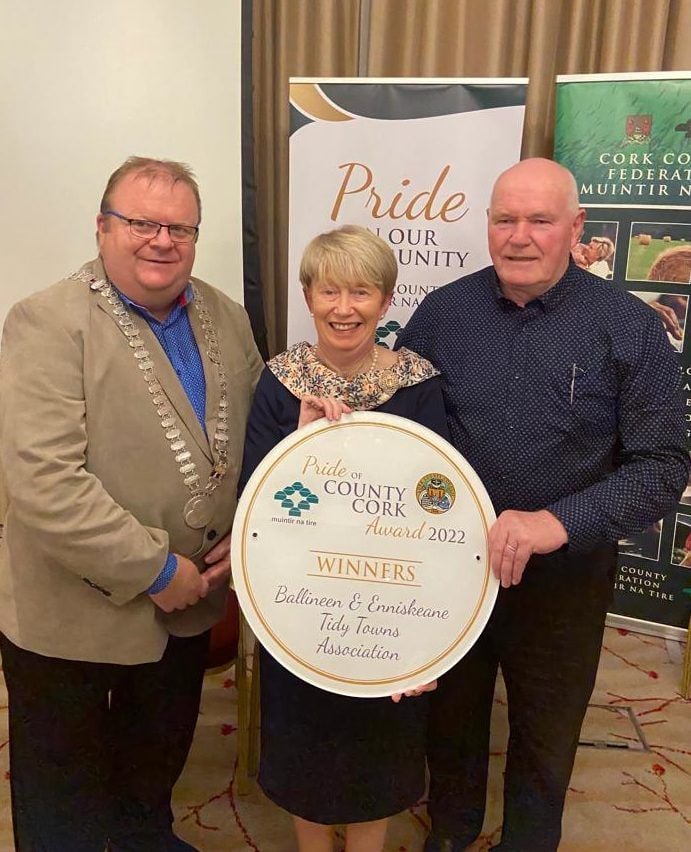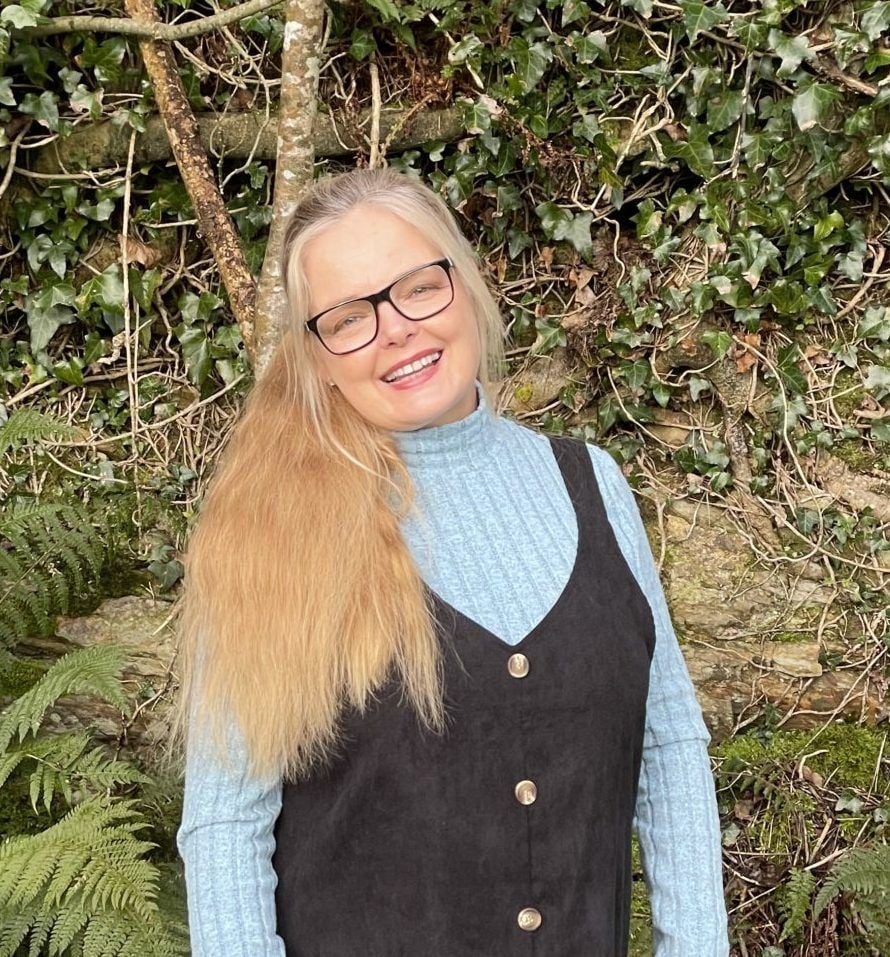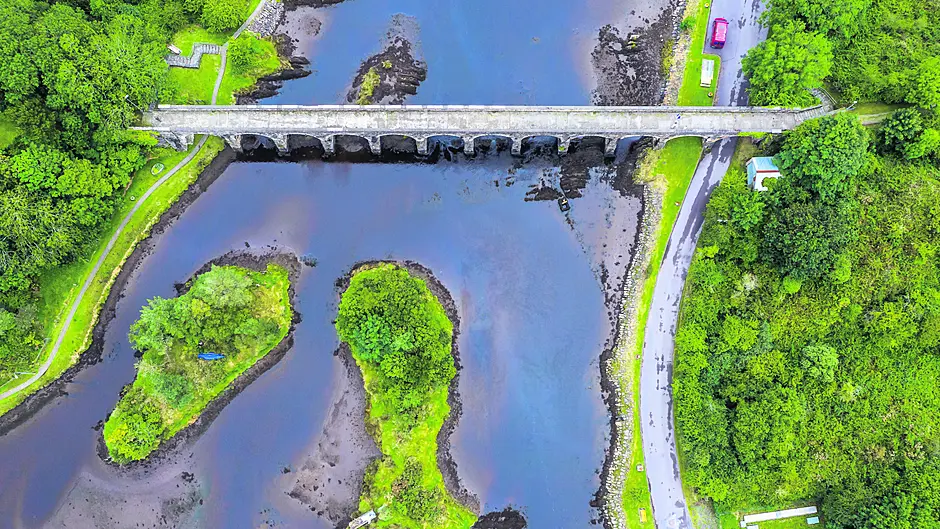Biodiversity is more than just a buzzword for local groups who have received funding to make real changes in their communities and create a lasting legacy for future generations to come
BY CONOR POWER
AS part of a collaboration between the National Parks and Wildlife Service and Community Foundation Ireland, grants were recently awarded to 70 communities for biodiversity projects across the country. Six communities in Cork were announced as recipients, of which two are based in West Cork. Ballineen/Enniskeane Tidy Towns Association and Cork Nature Network Ballydehob are set to receive €5,000 each.
While some projects focused on specific eco-systems or natural features, others expanded their roles to encompass principles around the anxiety that haunts us all – that of improving our environment and our planet.
For Dr Margaret O’Donovan, chair of Ballineen and Enniskeane Tidy Towns Association, the journey has been one of innovation on their part – of learning, educating and of widening the brief of a tidy towns committee.
 Dr Margaret O’Donovan, chair of Ballineen and Enniskeane Tidy Towns Association
Dr Margaret O’Donovan, chair of Ballineen and Enniskeane Tidy Towns Association
‘We’re delighted and absolutely thrilled to be receiving this award,’ says Dr O’Donovan. ‘I suppose that we have taken a wider brief than that which would have been originally the case. We wanted to take a more holistic view of what is good for the community and the environment and we came up with our own definition of that when we drew up a strategic plan five years ago.’
The strategic plan was built on a lot of principles around biodiversity and greater awareness in the broadest sense of the word.
‘To look after people, you must look after nature – look after flora and fauna.’
They began by focusing on the Bandon River that runs through the villages as it was so fundamental to the lives and history of them. In conjunction with the Local Authorities Water Programme (LAWPRO), they took a closer look at the biodiversity in their river and examining its aquatic life. They worked in partnership with another Cork-county-based community organisation – the Avondhu Blackwater Partnership – on this initiative.
The results were shared with everyone in the community, with education packages for the two primary schools, including a published booklet and a series of talks.
What this latest award means, Dr O’Donovan says, is that they can move onto the next stage of implementing their biodiversity plans for Ballineen and Enniskeane.
‘We can set up a biodiversity committee with local people and get it in place to promote the biodiversity plan,’ says Dr O’Donovan. ‘And with the services of an ecologist ... or maybe two, because we need that expertise as well, to strengthen our knowledge base and expand our knowledge and appreciation of it all.’
In Bandon, meanwhile, Nita Tarr is on a biodiversity journey of her own; one which she shares with her growing number of Twitter followers (1,024 and rising). For Nita, this has all been about changing her role from that of ‘gardener’ to one of ‘guardian,’ as she puts it in her own words.
 Nita Tarr, Bandon
Nita Tarr, Bandon
Biodiversity, she says, is a phrase that can turn people off and she much prefers the term ‘rewilding.’ She was very inspired by An Irish Atlantic Rainforest: a Personal Journey Into the Magic or Rewilding by journalist and author Eoghan Dalton, where he writes about rewilding 73 acres of land on the Beara peninsula.
Having moved from South Africa in 2000, Nita and her husband bought their property in 2007 – a derelict house from the 1850s on six-and-a -half acres. The top four acres were in pasture and she had created a garden of two acres around her house. Following a period of ongoing illness, she went out with a pair of secateurs and began pruning.
‘I got an immense feeling of satisfaction,’ she says, ‘and I discovered that a garden can heal you, rather than you trying to “heal” the garden.
‘Now the top acres that were in pasture have been completely left alone. There are trees and brambles and animals and everything ... I used to be horrified, thinking “Oh my goodness, we’re not looking after the land!’ but thank God we did that.’
Her rewilding project came into effect more by neglect than by design, she admits, but now she’s an enthusiastic rewilder whose life has been changed for the better by embracing biodiversity.
‘In the beginning, I was taming it and learning about plants and birds and mushrooms and I was very excited about all of that and I had managed to turn two acres of bramble into lawn. So now I’ve learned about rewilding and I’ve got to reverse it all. I’m not using herbicides anymore and I thought it would be nice for people to follow my progress.’
In Ballydehob, a grant-winning project that focused on the estuary of the River Bawnaknockane that flows under the famous 12-arch viaduct and into Roaringwater Bay was the focal point that is already drawing the coastal community together. The grant aid means that their plan can be put into action, due to start next April.
‘We’re now going to look, together with Cork Nature Network, at what needs to be done and the estuary will be the starting point,’ says Moze Jacobs, one of the main people involved in the proposal. She is part of Ballydonut – a locally-based organisation inspired by Doughnut Economics. This latter idea involves an alternative circular economic model based on principles of societal and environmental limitations, as devised by British economist Kate Raworth.
 Moze Jacobs, part of Ballydehob’s Ballydonut group
Moze Jacobs, part of Ballydehob’s Ballydonut group
‘It’s less focused on profit and more on people thriving,’ says Moze, ‘and on community and that we should stay within planetary boundaries and look after the resources that we have.’
Along with Ballydehob Community Council and Ballydehob Tidy Towns’ Association, Ballydonut forms a significant triumvirate of community-based organisations that are involved in this biodiversity project. Through former Ballydehob resident Maggie McColgan and her involvement in the Cork-city-based Cork Nature Network, the application was submitted.
‘In reality, it will be Ballydonut driving it, but we are going to liaise with other organisations, including working with an ecologist,’ says Moze.
‘Our aim is to encourage education and conservation of biodiversity in habitat,’ says Maggie McColgan, Development Director for Cork Nature Network – a charity founded in 2015 with a national remit. ‘We had conversations with Moze with the Ballydonut group and other community members, just talking about the estuary. It’s slated to be dredged over the next three to five years and I think that the community are interested in perhaps rethinking the way that area has been used in terms of biodiversity and habitat protection and also amenity use.’










